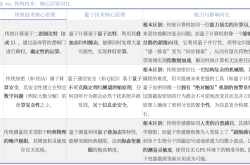Just Now, Huawei Makes a Surprise Foray into the RMB 200 Billion New Robotics Sector
![]() 11/28 2025
11/28 2025
![]() 476
476

It's truly unexpected that Huawei has stepped into this sector.
On November 26, Yu Chengdong, Chairman of Huawei's Terminal BG, announced that Huawei has unveiled its first chat companion robot, 'Smart Hahan.' Priced at RMB 399, it is set to hit the market on November 28.
'Smart Hahan' sports the appearance of a plush toy. It can engage in voice conversations and touch interactions with users. Moreover, it boasts an exclusive diary memory system capable of recording users' daily confidences and secrets.
2025 marks a year of explosive growth for AI companion hardware.
According to Pencil News statistics, since the start of this year, over 20 domestic and international 'AI + Hardware' companion companies have secured funding. Among them, firms with single-round funding exceeding RMB 100 million include Yueran Innovation, Lingyuzhou, Vita Power, Xuanyuan Technology, and Leju Robotics.
A founder of an AI companion toy company shared with Pencil News that Huawei's entry signals the genuine establishment of this sector.
However, some entrepreneurs also informed Pencil News that the industry is fiercely competitive. Many products are merely toys equipped with chips. The interactive capabilities of built-in large models show little significant difference, and IP exerts a greater influence on product sales.
Some entrepreneurs also disclosed that there is a considerable amount of exaggeration in industry data. The sales volumes of some popular products are not as substantial as claimed externally.
What is Huawei's ultimate objective in entering this market now? Is it solely to sell products, or is it to utilize toys as terminals to gather a vast amount of high-value real data, laying the groundwork for the next generation of more advanced AI products?
- 01 -
As early as half a year ago, rumors began circulating in Shenzhen's supply chain circles that Huawei was secretly developing an AI pet hardware product.
According to reports from the 'AI Hardware Circle,' this summer, with the upgrade to the HarmonyOS 5.1 system, Huawei introduced the virtual character 'Hahan' to its users.
At that time, Hahan primarily served as an intelligent companion on mobile devices. Users could interact with it on the screen, simulate petting, and have its state synchronized according to their life rhythm.
The physical 'Smart Hahan' is equipped with Huawei's Xiaoyi large model and is compatible with the HarmonyOS system. It has been designed with a complete cosmology — it hails from a ring-shaped planet where emotional energy is the source of life. Due to an energy crisis caused by a lack of diversity in happiness on the planet, it was dispatched to Earth to form a partnership contract with humans.
According to the 'AI Knowledge Toy Library,' users can trigger responses like petting and tickling by touching and blowing on 'Smart Hahan.' Touching its forehead elicits different facial expressions, and gentle shaking makes it tremble with excitement. Through dialogue, it can listen to users' emotions. It has memory capabilities: it can recall things shared with Hahan and create shared memories through diary entries.
It can also offer rhythmic synchronization services such as morning greetings and bedtime goodnights based on the user's schedule.
Pencil News has not yet had a firsthand experience with 'Smart Hahan.' However, based on introductions and descriptions from multiple media outlets, its functions do not surpass those of several AI companion toys that Pencil News has previously encountered.
Some analysts believe that Huawei's entry will help promote the concept of 'AI toys' to hundreds of millions of ordinary consumers with unprecedented intensity and scope. Meanwhile, B2B clients such as distributors, retail channels, and gift purchasers will also take notice.
This is no longer a niche product but a potential category that is on the verge of taking off and has been validated by mainstream brands.
A founder told Pencil News that Huawei's entry is a positive development as it will draw more attention to AI companion devices and accelerate the progress of the entire industry.
Another founder mentioned to Pencil News that they are not overly concerned about the entry of giants like Huawei because creating AI companion toys involves more than just technology; it also requires a profound understanding of emotions, IP, and user experience, which is difficult to replicate quickly.
However, for Huawei, which boasts abundant financial resources and extensive experience in consumer electronics, these may not pose significant challenges.
- 02 -
AI companion toys are in the business of 'combating loneliness.'
How substantial is this business?
The global market size for intelligent companionship reached USD 28.19 billion (approximately RMB 200 billion) in 2024.
For many single young people, elderly individuals living alone, or those lacking long-term emotional support, traditional social interactions are becoming increasingly challenging due to time constraints, limited energy, and high costs.
On the other hand, AI companion toys do not require scheduling and are free from social formalities. They are always available for conversation and companionship, providing almost a 'ready-to-use emotional support' for users.
Moreover, technology has also matured. Large models, multimodal interactions, voice synthesis, and emotion recognition have enabled 'AI chat companions' to possess a genuine 'human touch' for the first time.
An entrepreneur shared with Pencil News that the proliferation of AI companion toys is primarily due to the maturity of large model technology. 'Companionship is the scenario where large models can demonstrate their value most effectively while meeting strong societal demands. The technology in this area has become highly mature.'
Past intelligent assistants could only respond to voice commands: playing music, checking the weather, setting reminders. They addressed efficiency issues but engaged in shallow dialogue, lacking emotions and empathy, as well as contextual memory. Therefore, they were almost incapable of undertaking continuous, emotion-driven communication like 'chat companions.'
AI companion toys can establish emotional connections through 'personified expressions, emotional resonance, long-term memory, and contextual understanding.'
These products are also easily scalable. A single trained large model can serve thousands or even millions of users simultaneously. As long as cost control is effective in the physical components, large-scale production is also feasible.
Data indicates that the daily active users of AI companion applications doubled in 2025 compared to the previous year. More and more people are actively seeking such companionship. This shift from 'tools' to 'companions' is essentially a natural result of technological maturity.
Compared to traditional consumer electronics, the 'emotional value + social value' attached to chat companion robots endow them with stronger stickiness and potential for repeat purchases.
For many users, this is not a one-time purchase but an entry point for 'long-term companionship + periodic services/subscriptions/value-added services,' which also represents a stable and continuous monetization route for enterprises.
For the upstream sectors of the industrial chain — including chips, voice recognition/synthesis technology, multimodal perception, sensors, and algorithm models — this represents a new catalyst for demand.
- 03 -
Although there has been significant financing in the AI companion toy industry in 2025, the boom may have just commenced.
Li Yong, the founder of Yueran Innovation, once told Pencil News, 'If it's just about creating a toy that can simply speak at a passing grade, many companies can achieve that. However, the ultimate goal of AI toys is to achieve a sense of 'life.' Even the most advanced open-source solutions are not satisfactory yet.'
It is possible that by 2026, with advancements in large model technology, particularly in forgetting and personalization, there will be even greater breakthroughs. Hardware and IP solutions are already relatively mature, but the AI capabilities at the software level still require time.
In the future, the functions of AI companion hardware will become increasingly diverse.
From simple 'voice/text chat + emotion recognition' to multimodal interactions (sound + expressions + tone + facial + visual + scene perception), and even 'embodied intelligence' — truly entering home, caregiving, and companionship scenarios, evolving towards 'social assistance robots.'
Currently, many chat companion products target children and young people. However, with an aging population, increasing demand for elderly care, and a growing number of empty-nesters with children living away, 'caregiving + chat + emotional support + health care' robots may become a significant growth direction.
Some voices in the industry already believe that 'AI robots will become family members alongside humans and pets.'
AI companion toys may also serve as an entry point for realizing higher-dimensional ideals. Gu Jiaying, the founder of Lingyuzhou, hopes to 'collect vast amounts of real, multimodal user interaction data by deploying lightweight hardware terminals. This data will be used to feed back and iterate our models and algorithms, ultimately leading to more advanced AGI and home robots.'
This article does not constitute any investment advice.








